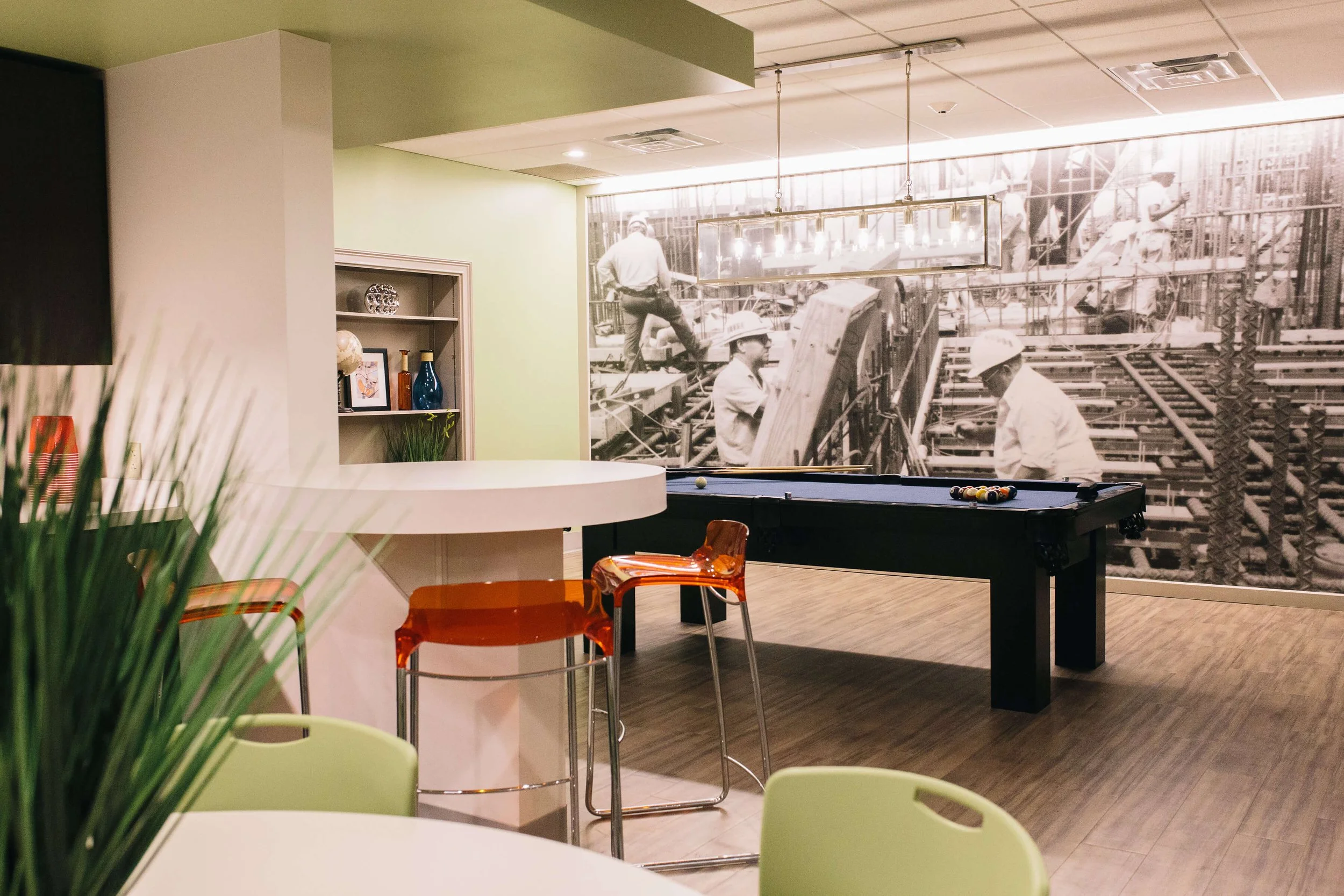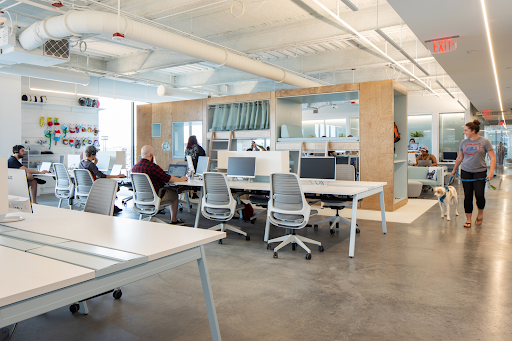Why Interior Design Matters in Building a Strong Company Brand
Branding is the foundation of any successful organization, as it serves as the key link between a firm and its audience, communicating not only identity but also values and promises. These components combine to establish long-lasting bonds based on trust and loyalty.
Interior design, which is often overlooked yet has a significant impact on brand development, actively shapes corporate spaces such as retail stores, offices, and hospitality venues to reinforce brand identification by creating an immersive experience that is consistent with a company's values and messaging.
Thoughtful interior design actively shapes a brand's impression through layout, color, and material selection, resulting in a consistent and memorable brand narrative.
This article looks at the dynamic interplay between interior design and branding, emphasizing how physical spaces express a company's identity and ideals. It explores how design amplifies customer experiences, raises employee morale, and strengthens brand identification through practical design aspects and real-world examples.
The Connection Between Interior Design and Branding
Defining Branding and How It Extends Beyond Logos and Marketing Materials
When consumers think of a company's branding, they typically see its logo, color scheme, or advertising campaigns. However, branding encompasses much more than that. It conveys the essence of a company's identity, values, and commitments to its target audience.
Interior design is a cornerstone in the vast world of branding: while logos and marketing materials—static and limited in influence—are essential, actual spaces provide dynamic, immersive experiences that can strengthen a company's brand identity with each interaction.
By combining design aspects that match the brand's core identity—from furniture and materials to layout and ambiance—businesses can make their physical environments extensions of their branding strategy. A holistic approach ensures brand consistency across platforms and touchpoints, cementing its image in the audience's mind.
The image depicts a modern and professional-looking office waiting area designed to reflect the brand of the International Brotherhood of Electrical Workers (IBEW) Local 1579. The overall design of this office communicates a sense of professionalism, comfort, and brand cohesion, aligning with this article's theme on the importance of interior design in branding.
How Physical Space Embodies Brand Values and Personality
Physical spaces communicate tales, not just do business. Beyond words and images, interior design expresses a brand's essence and individuality. Companies that value sustainability may incorporate salvaged wood, energy-efficient lighting, and plants into their workplaces or retail areas.
The brand's design appeals to environmentally concerned customers and employees, indicating a dedication to sustainability.
Strengthening the Customer Experience Through Interior Design
Creating Memorable First Impressions for Clients and Customers
Customers evaluate a company based on its interior design, which conveys professionalism, values, and care. When a client or consumer enters a beautiful lobby or bustling storefront, the design conveys trust, enthusiasm, or comfort, establishing expectations for their interaction.
To make a good impression, the design must fit the brand's identity, whether it's bright, modern furnishings for a computer corporation or warm, rustic features for a family-owned café. First impressions frequently result in word-of-mouth endorsements and recurring business.
A unique design may compel people to share it with friends and family or on social media, increasing the brand's visibility. In today's competitive market with countless customer options, businesses must create captivating, emotionally resonant environments to stand out.
This image depicts a modern, appealing area for customers to make a good first impression. The space's pool table suggests a casual environment, and a massive black-and-white mural of construction workers lends industrial style and a sense of history or progress to high, round tables with brightly colored seats. Orange and green accents give this area energy and visual curiosity.
Enhancing Brand Recognition Through Consistent Design Elements
Consistency is key to effective branding, which interior design can help demonstrate. Companies that employ consistent design elements such as color palettes, themes, and furniture designs create a brand experience that extends beyond marketing materials.
When customers go into a retail store with the same brilliant colors and sleek shapes as its promotions, they immediately recognize the brand.
Aligning Aesthetic Choices with Brand Messaging
Beyond aesthetics, interior design communicates a brand's story. Everything, from wall art to furniture layout, should reflect the company's beliefs and mission.
To demonstrate its creativity and progressiveness, a corporation may employ cutting-edge technology, minimalist designs, and open areas. In contrast, a traditional brand combines timeless materials, classic patterns, and historical references to communicate its narrative.
Practical Elements of Design That Reinforce Branding
Use of Colors, Lighting, and Textures in Alignment with Brand Identity
Colors, lighting, and textures influence brand perception. Colors elicit feelings and associations that reflect a company's culture and personality.
A tech corporation seeking innovation, for example, may choose sleek metallic finishes in addition to cool blues and whites. To encourage quiet and natural harmony, a wellness brand seeking peace may use earthy tones such as greens and browns.
Customers and staff are immersed in the company's identity by strategically incorporating trademark colors into furniture, walls, and decor.
Strategic Incorporation of Logos and Brand Symbols in the Space
Logos and brand symbols, powerful visual elements, can strategically transform interior design into a lasting impression. Businesses do not have to simply place logos on walls; they can creatively integrate branding by etching company icons onto glass partitions, weaving them into carpet patterns, or displaying sculptural centerpieces in reception areas.
Subtle yet impactful placements guarantee that the brand's presence is felt without dominating the room.
Importance of Balancing Form, Function, and Brand Storytelling
Interior design must prioritize functionality while maintaining aesthetic appeal, ensuring that spaces serve their intended purpose. Balancing form and function entails creating environments that are visually appealing while also practical for daily use.
For example, open-plan office spaces may reflect a brand's emphasis on collaboration, but should still include quiet zones or ergonomic furniture to boost productivity.
Building Employee Morale and Productivity
Workplace Design as a Reflection of Company Culture
A company's workspace represents not only its business but also its culture and beliefs. Employees form bonds with their workplace and company in an atmosphere that represents its mission and character.
A software business that values innovation may choose open rooms with movable seating for collaborative brainstorming, whereas a law firm may prefer organized facilities that convey expertise through precise formality. Each design choice represents the industry's driving ideals.
Companies provide employees with a sense of belonging and purpose by designing workspaces that represent their business culture.
This office (Bark pet supply company) was designed to be pet friendly and allow their employees to bring pets in
Promoting Comfort, Efficiency, and Creativity in Employee Spaces
Workplace productivity requires comfort; employees are unlikely to perform well if they are physically uneasy or hampered by their surroundings.
Ergonomic furniture, adjustable desks, and thoughtfully aligned seating arrangements significantly improve comfort, reducing fatigue and bodily stress. A properly designed workspace identifies and resolves essential elements such as temperature management, air quality, and noise reduction, ensuring that employees can focus on their jobs without being distracted
How Interior Design Impacts Employee Pride and Allegiance to the Brand
A well-designed workspace instills pride in employees; it conveys that their contributions matter and the work environment mirrors the company's success. When such a space is aesthetically pleasing and thoughtfully designed, employees often embrace ownership of their roles, feeling closely tied to the brand.
This pride emerges as advocacy for the company, eagerness to share its values, and an investment in its long-term aspirations.
Conclusion:
Interior design is more than just a matter of aesthetics; it can help shape a company's corporate identity. This article digs into how well-designed spaces use color palettes, textures, and careful positioning of logos and symbols to capture brand values, foster powerful customer experiences, and cultivate employee contentment: each aspect tells a story about the company.
Companies may create memorable settings for customers and employees by matching physical places with brand messages, thereby enhancing their market position. Businesses that invest in unified and thoughtful interior design choices have significant long-term benefits, including increased consumer engagement, greater employee morale, and a stronger brand presence.
Business executives who respect interior design as a branding tool will be better able to adapt, expand, and succeed in an ever-changing business landscape; a well-designed space signifies not only a current investment but also a commitment to the brand's future success.




